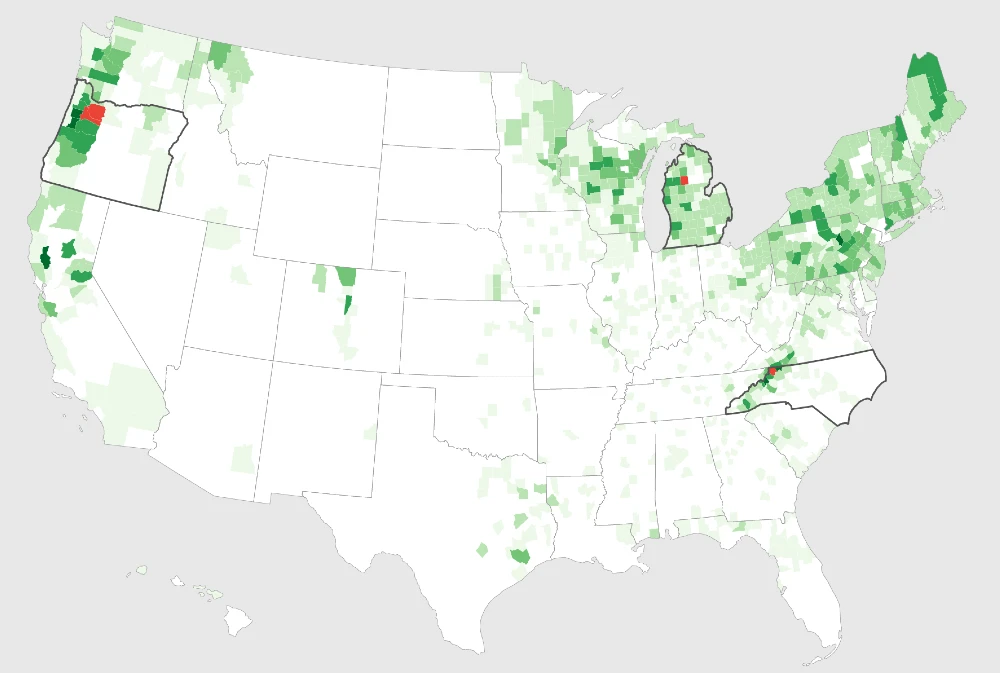The tradition of adorning our homes with Christmas trees dates to the late 1800s, but as environmental concerns take center stage, it’s time to pause and ponder the eco-friendliness of this beloved holiday tradition. While real Christmas trees don’t pose the plastic problem of their artificial counterparts, certain aspects of their cultivation raise environmental red flags.
The use of fertilizers in the quest for the “perfect tree” can lead to harmful consequences, including surface runoff that pollutes nearby ecosystems. Moreover, the extensive shipping of trees across the globe to reach our living rooms carries a hefty carbon footprint.
Vertical farming isn’t here to replace the time-honored tradition of Christmas tree farming, but it offers an intriguing avenue to mitigate associated emissions. We sat down with Tanveer Khan, Head of Science at IGS (Intelligent Growth Solutions), to delve into how their technology could revolutionize the way we grow Christmas trees.
Benefits of Embracing New Technology for Christmas Tree Cultivation

IGS has partnered with Forestry and Land Scotland to conduct trials aimed at reforestation using their innovative technology. The outcomes have been nothing short of remarkable, and these benefits extend to the cultivation of Christmas trees, which often include popular varieties like Norway Spruce, Douglas Fir, or Scotch Pine.
Tanveer Khan elaborates on the advantages, saying, “The main benefits would be the speed of growth, germination rate, and the potential to reduce (or eliminate) tree losses. Another significant advantage is scale – we can produce 2.7 million seedlings per year using a single 12-meter IGS Growth Tower. Our technology allows us to nurture trees until they are ready for further growth, whether that’s in an outdoor nursery or a greenhouse. Traditional outdoor nursery growth typically spans seven months and incurs losses of up to 30% initially, and even higher percentages over extended periods. By contrast, vertical farming accelerates this process to under three months and has the potential to eliminate losses entirely.”

Pioneering the Perfect Christmas Tree
The pursuit of the quintessential Christmas tree often leads growers to employ high levels of fertilizers and results in substantial wastage as many seedlings fail to meet the desired standards. However, the use of sustainable, planet-friendly technologies could be a game-changer in the quest for the perfect tree.
Tanveer Khan sheds light on their work, stating, “We are currently experimenting with branching trees in a vertical farm using different types of light. This approach marks a departure from our previous method of growing the main stem and then transferring them to outdoor tree nurseries. With this concept, we can craft the ideal Christmas tree within a Growth Tower before transplanting it to a more conventional setting. We blend various light spectrums to stimulate growth. Although our trials are in the early stages, light remains a critical factor influencing tree growth. Once the seedlings reach approximately 30-40cm in height, we expand their growing space to enhance stem girth, and then they continue their growth in a polytunnel.”

Slashing Transportation Costs and Emissions
“Using IGS technology, Christmas trees can be cultivated virtually anywhere in the world,” Tanveer Khan points out. “This approach dramatically reduces emissions associated with transportation. People in warmer countries like Australia and Brazil desire Douglas fir Christmas trees, but these trees traditionally require growth in colder climates. Vertical farming eliminates this geographical constraint, enabling cultivation closer to consumers and minimizing the risk of tree mortality during transportation.”
More To Discover
- Trees Are The Unexpected Climate Challengers on the Great Plains
- Illegal Foraging Threatens Forest Preserves as Demand Soars for Ramps and Morels
- 1.5 Billion Tires Are Thrown Away Annually, A New Recycling Method Can Transform Them Into High-Value Products
- UK Launches Investigation into Dove Parent Unilever’s Green Claims
“This method can complement other forms of cultivation, as the seedlings can be transported to a greenhouse to complete their growth before reaching nearby living rooms. They receive ample light during the initial growth phase through vertical farming technology. However, as they mature, they require less light (recall that Douglas firs are native to colder, less sunny climates), making a greenhouse environment suitable. With temperatures around 20 degrees Celsius (68 degrees Fahrenheit) and vertical farms powered by renewable energy, this approach promises significant reductions in operational costs.”
In conclusion, as we explore innovative solutions to make Christmas tree farming more sustainable, IGS technology offers a promising path toward greener, more efficient cultivation, potentially revolutionizing the way we celebrate this cherished holiday tradition.




















